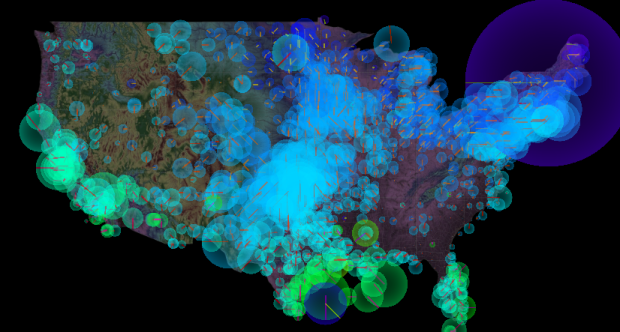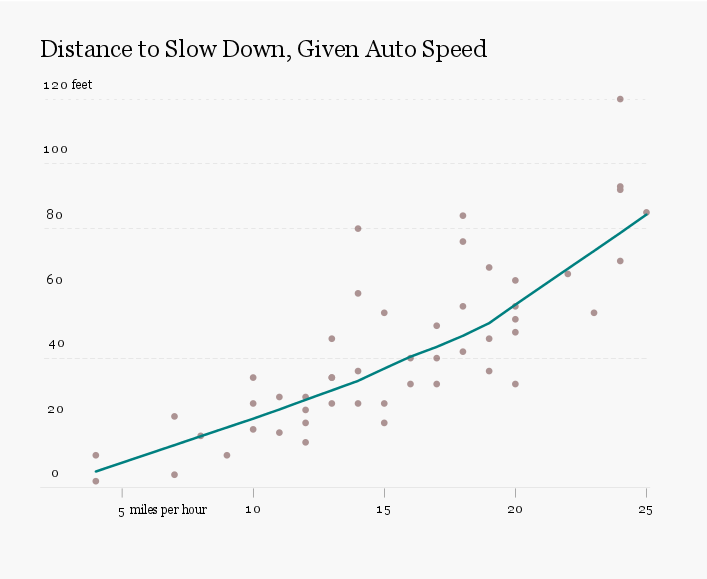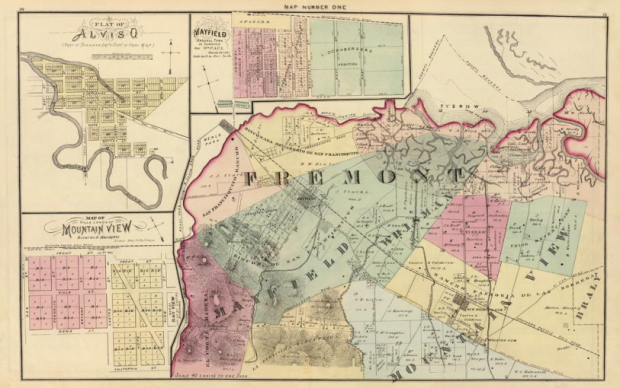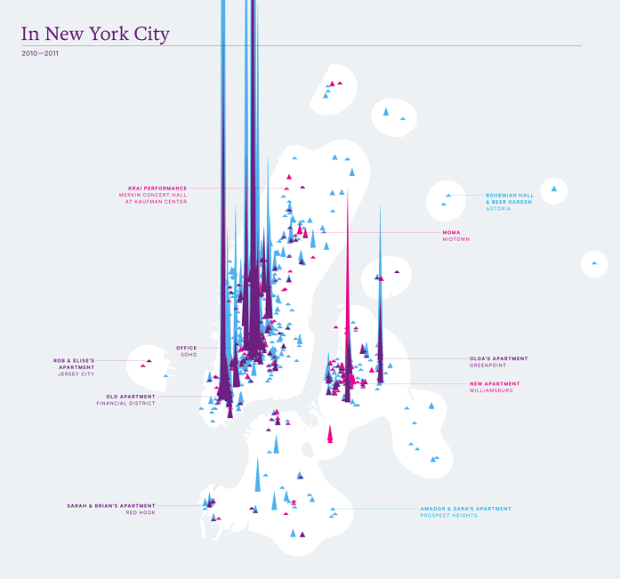In collaboration with Lift and Near Future Laboratory, Interactive Things explores digital traces left by mobile phones in Ville Vivante. Lines and paths flow from place to place in Geneva, Switzerland, showing how the people move in and out of the city during a 24-hour period.
It’s hard to say exactly what you’re seeing here because it does move so fast, and it probably means more if you live in or near Geneva, but speaking to the video itself, you have your highs and lows during the start and end of days. It then cycles through a handful of views, namely one that looks like wind blowing through and another where particles shoot up from the ground.
There are also interactive views on the project site.
Reminds me of David Wicks’ Drawing Water, which shows the flow of sources in the country.





 Visualize This: The FlowingData Guide to Design, Visualization, and Statistics (2nd Edition)
Visualize This: The FlowingData Guide to Design, Visualization, and Statistics (2nd Edition)










